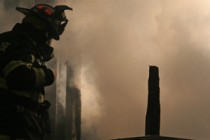Concern Grows in Firefighters, Others After Cancer-causing Flame Retardants Found in Test Subjects
by Edward Ortiz, The Sacramento Bee
A growing body of evidence found an array of flame-retardant chemicals – many which are carcinogenic – in test participants, a potential health concern for firefighters and others exposed to the chemicals.
The most recent study on flame-retardant chemicals, released in October, found the flame-retardant chemical chlorinated Tris in the blood and urine of all but one of the 16 nonsmoking adults tested in the study.
The Bay Area-focused study is seen as key because it tested for a group of phosphate flame retardants that, until now, have largely flown under the radar compared to research on the banned flame retardants known as PBDEs.
The results suggest the home environment is a major exposure area because those with the highest level of carcinogenic flame retardants in their urine also had high concentrations of the retardant in dust in their home. Over time, flame retardants in furniture and bedding are released from the foam and attach to household dust, experts said.
The findings in the studies deeply concern firefighters who encounter the chemicals when battling residential blazes.
“Flame retardant may be the lead of the 21st century,” said Brian Rice, former deputy fire chief with the Sacramento Metro Fire District and president of Sacramento Area Firefighters Union Local 522. Rice started fighting fires in the 1980s. “I’m 55 and I feel like it is not a matter of if I will get cancer, but when.”
Continue reading in the Sacramento Bee; free registration required »
Tags: Toxic Flame Retardants
